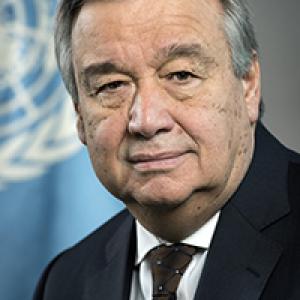Around the world, at least 40 per cent of all intrastate conflicts have had an important natural resource dimension.
Rising temperatures due to climate change now threaten to further amplify environmental stresses and tensions. And, all too often, the environment is among the casualties of war, through deliberate acts of destruction or collateral damage, or because, during conflicts, governments fail to control and manage natural resources.
While climate disruption and environmental degradation are not the direct cause of conflict, they can exacerbate conflict risks. Their combined impacts undermine livelihoods, food security, confidence in government, health and education, and social equality. Degradation of natural resources and ecosystems adds to the challenges faced by communities who are already vulnerable in the short and long term. Women and girls are disproportionately affected.
The United Nations Sustainable Development Goals are inspired by the idea that no one should be left behind. But violent conflict prevents many countries from moving forward. Conflict-affected states are less likely to reach their SDG targets; and, by 2030, more than 80 per cent of the world’s poorest populations may be concentrated in countries affected by fragility, conflict and violence.
Better management of natural resources and ecosystems could pave a path for peace in war-torn societies, helping crisis-affected countries move a step closer to achieving the SDGs. Not only do natural resources underpin the delivery of many basic services, such as water or electricity, but they can also be used as a platform for trust building and benefit sharing between divided groups.
This requires collaboration among governments, civil society, the private sector and specialized institutions; building local capacity and resilience; harnessing data and digital technologies for risk analysis and collaborative management; investing in women as change agents; and strengthening legal and policy discussions within a coherent framework of international actors.
As we mark the International Day for Preventing the Exploitation of the Environment in War and Armed Conflict, approximately one in every five people is living in an area affected by fragility, conflict or violence.
If we are to achieve the SDGs, we need to act boldly and urgently to reduce the risks that environmental degradation and climate change present for conflict and commit to protecting our planet from the debilitating effects of war.



